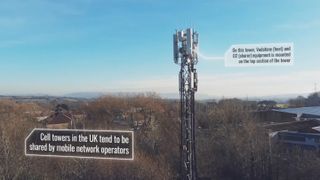If you've ever walked through a town you might have noticed tiny 5G cell towers on street light poles. They look like small boxes however, they're actually transmitting wireless signals from mobile providers to your mobile.
They are replacing larger built cell towers. While they're less noticeable however, they could cause problems for people.
It is the Federal Communications Commission's Radiation Exposure Thresholds
The FCC's Radiation Exposure Thresholds define the maximum amount of time a person can be exposed to electromagnetic energy from wireless devices. The exposure limits are based on scientific data that prove that electromagnetic energy can be harmful to health.
The rate of absorption called the specific absorption rate (SAR) is an indicator of the amount of radiofrequency energy absorption by tissues. It's usually 1.6 watts per kilogram, calculated over one gram of tissue.
But, since 5g operates at higher frequencies and has the potential to create more energy on the skin and other directly-exposed body parts. This could lead to many possible harms, such as an increase in development of skin diseases such as dermatitis and skin cancer and cataracts.
Due to the possible severe effects of 5g radiation, PSU has chosen to establish a general, localized limits on power density, which is 4mW/cm2 averaged over 1 cm2, and not to exceed 30 minutes for all 5G services at 3000 GHz. This limit for localization is in line with the peak SAR spatial-average of 1.6 W/kg averaged over 1 g of tissue at 6 GHz.
what is a safe distance from a cell tower for Maximum Exposure
If you've ever used a mobile phone, you probably know that the safest range from the tower is around 400 meters away. This is because the power of transmission from the cell tower is significantly increased the further away you are from it.
While it sounds like a good idea, the reality is that those living close to towers might be more vulnerable to health problems. For instance, a study conducted in 2014 in India found that residents living within 50 meters of cell towers experienced significant more health issues than those who were far from antennas.

But, what is a safe distance from a cell tower found that people who moved to areas further away from the cell towers saw their symptoms improve within a couple of days. Another study has demonstrated that exposure to extreme levels of radiofrequency electromagnetic fields (EMFs) could cause cancer, brain tumors as well as other health issues.
This is due to the fact that radiofrequency radiation, which is used in wireless communications, may be absorbed by the body's outer layer, the skin. This is important to understand since the skin functions as a protective barrier against mechanical injury, infection caused by pathogenic microorganisms and infiltration of toxic substances. It is also the largest organ of the human body. what is a safe distance from a 5g cell tower is accountable for keeping the integrity of the other organs.
The FCC's Minimum Exposure Thresholds for the Minimum Exposure
The FCC's Minimum Exposure Thresholds are based on a variety of assumptions that are not supported by scientific research. They include the false belief that exposures to RF radiation are safe due to minimal penetration into the body (i.e., tissue heating).
The assumption also ignores the greater penetration of ELF components of modulated RF signals as well as the effect of brief bursts of heat from pulsed RF waves. These assumptions are not in line with current understanding of the biological consequences of RF radiation. As such they should not be used for health protective exposure standards.
In addition there is the fact that both ICNIRP and FCC limit their radiation limits for local peak SARs that are based on the maximum frequency of absorption (psSAR), which can be described as an inadequate dosimetric tool for determining the level of exposure to RF radiation. In particular, psSAR is inaccurate for frequencies above 6 GHz. In addition, psSAR is not been evaluated for RF radiation with co-exposure to other agents of the environment such like sunlight. Interactions of RF radiations with different agents in the environment could result in antagonistic or synergistic results. This could result in the risk of having adverse health adverse effects. For instance, exposure to RF radiation with sunlight may increase the risk of developing skin cancer and exacerbate other skin conditions like acne.
